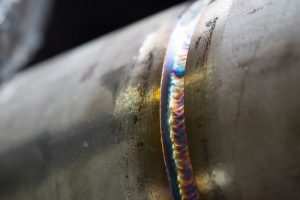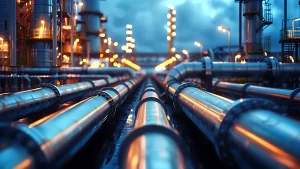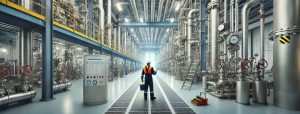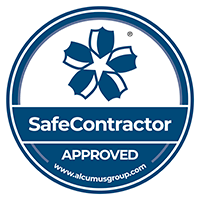Pipework failures can lead to costly repairs, operational downtime, and safety hazards. From industries relying on water and gas distribution to complex industrial systems, the consequences of a pipework breakdown can be catastrophic.
Thus, ensuring that pipework systems are robust and well-maintained is essential for smooth operation and safety across various sectors.
Proactive maintenance and regular inspections are crucial in mitigating the risks of failure. Adopting a long-term approach to pipework upkeep can help companies avoid unplanned downtime and reduce the overall costs of emergency repairs.
This blog will explore best practices for maintaining and repairing pipework to prevent such failures.
Identifying Common Causes of Pipework Failures
Several factors contribute to pipework failures, and material fatigue is one of the most common. Over time, pipes can weaken due to constant stress, leading to cracks or leaks.
External factors, such as corrosion caused by exposure to moisture or chemicals, also contribute significantly to pipe degradation.
This is particularly relevant in industries where chemicals and extreme temperatures are present, increasing the likelihood of failure.
Pressure and temperature fluctuations can place undue stress on pipework, causing expansion and contraction that leads to wear and tear.
Additionally, improper installation or poor design can undermine the durability of a system, with pipes unable to handle the operational load.
Addressing these common causes is a key step in preventing breakdowns before they happen.
Routine Inspections and Condition Monitoring
Conducting routine inspections is one of the most effective ways to catch potential issues before they escalate. Regular visual checks can identify early signs of corrosion, leaks, or mechanical stress, helping to avoid sudden failures.
Industries that utilise pipework under extreme conditions, such as oil refineries, must prioritise these inspections to minimise the risk of unexpected breakdowns.
Advanced condition monitoring technologies, such as ultrasound testing and thermal imaging, provide additional insight into pipe integrity.
These methods allow operators to detect weaknesses inside the pipes that are not visible to the naked eye.
By integrating these monitoring tools into a regular maintenance schedule, companies can significantly reduce the risk of sudden failure.

Preventive Maintenance Practices
Preventive maintenance involves not only fixing problems when they arise but actively working to avoid them. Cleaning and descaling pipe interiors are important in preventing blockages and ensuring smooth flow.
This is particularly important for systems handling fluids prone to build-up, such as water or chemical solutions. Additionally, pipes exposed to corrosive environments should be regularly recoated to offer extra protection against rust and other forms of degradation.
Lubrication of joints and fittings is another key aspect of preventive maintenance. Without regular lubrication, friction can cause fittings to deteriorate over time, leading to potential leaks or breakage.
Scheduling these maintenance tasks periodically ensures that the entire pipework system operates efficiently, reducing the risk of failure.
Pipe Repair Techniques
In the event of a failure, choosing the right repair method is essential for restoring the integrity of the system. Welding and brazing are widely used to repair cracked or broken pipes, providing a long-lasting solution.
However, these methods require skilled technicians to ensure that the repair is done safely and effectively. For minor damages, pipe wrapping and sealing solutions can offer a temporary fix until more permanent repairs can be carried out.
It is important to differentiate between temporary and permanent repair strategies. While quick fixes like pipe seals may work in the short term, they should not replace thorough repairs.
Ensuring that repairs are performed to a high standard will prevent recurring issues, thereby avoiding the need for repeated intervention.

Employee Training and Safety Protocols
A well-trained workforce is critical in preventing pipework failures. Employees should be equipped with the knowledge to identify early signs of degradation, such as leaks or unusual pressure readings.
Regular training programmes can help staff stay informed about the latest technologies and methods for pipe maintenance, ensuring that any issues are promptly addressed.
In addition to technical training, safety protocols are essential when performing repairs. Working on pipework, especially under high pressure or in hazardous environments, requires strict adherence to safety guidelines.
This ensures not only the protection of employees but also minimises the chances of human error leading to further damage or failure.
Upgrading Outdated Systems
As industries grow and technology advances, it’s crucial to evaluate when pipework systems need upgrading. Outdated systems are more prone to failure, and modern materials like stainless steel or plastic can offer improved durability and resistance to corrosion.
Investing in updated pipework can significantly reduce long-term maintenance costs and improve overall system reliability.
Additionally, upgrading systems allows businesses to take advantage of newer technologies that improve efficiency and safety.
Incorporating modern pipework materials can help industries adapt to increasingly stringent environmental regulations, as well as reduce the likelihood of system failures due to outdated infrastructure.

Conclusion
Preventing pipework failures requires a combination of regular maintenance, thorough inspections, and proactive repairs.
By staying ahead of potential issues, industries can ensure the longevity and reliability of their pipework systems, reducing operational downtime and avoiding costly repairs.
Investing in these best practices not only secures the infrastructure but also guarantees safety and efficiency in the long run.







